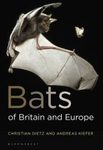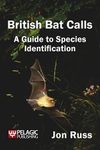About this book
With more than 1,400 species, bats are an incredibly diverse and successful group of mammals that can serve as model systems for many unique evolutionary adaptations. Flight has allowed them to master the sky, while echolocation enables them to navigate in the dark. Being small, secretive, nocturnal creatures has made bats a challenge to study, but over the past 50 years, innovative research has made it possible to dispel some of the mystery and myth surrounding them to give us a better understanding of the role these animals play in the ecosystem.
The structure of 50 Years of Bat Research is based on several broad themes across the biological sciences, including the evolution of bats, their ecology and behavior, and conservation of biodiversity. Within these themes are more specific topics on important aspects of bat research, such as morphology, molecular biology, echolocation, taxonomy, systematics, threats to bats, social structure, reproduction, movements, and feeding strategies.
Given its scope, the book will appeal to the wider scientific community, environmental organizations, and government policymakers who are interested in the interdisciplinary aspects of biology and nature.
Contents
- NASBR Origins 1970–2020: From an Informal Gathering to a Scientific Society Pages 3-22 / Kwiecinski, Gary G. et al.
- Contributions of Women and Creating a Culture of Inclusivity at the North American Society for Bat Research Pages 23-40 / Frick, Winifred F. et al.
- The Evolution of Acoustic Methods for the Study of Bats Pages 43-59 / Zamora-Gutierrez, Veronica et al.
- How Noise Affects Bats and What It Reveals About Their Biosonar Systems Pages 61-76 / Smotherman, Michael S. et al.
- All the Better to Eat You with: The Legacy of James S. Findley’s Phenetic Approach to Bat Biology Pages 79-91 / Arita, Héctor T. et al.
- Bats in Temperate Forests: Where Are the Trends in Bat Populations? Pages 93-104 / Law, Bradley S. et al.
- The Importance of Water Availability to Bats: Climate Warming and Increasing Global Aridity Pages 105-120 / Adams, Rick A. et al.
- Bats and the Ecological and Evolutionary Consequences of Resource Spatio-temporal Predictability (STP) Pages 123-134 / Fleming, Theodore H.
- Fur, Wings, and Flowers: Development and Progress on Nectarivorous Bat Research in the Last 50 Years Pages 135-149 / Moreira-Hernández, Juan I. et al.
- Penguins, Falcons, and Mountain Lions: The Extraordinary Host Diversity of Vampire Bats Pages 151-170 / Carter, Gerald et al.
- There and Back Again: Homing in Bats Revisited Pages 173-187 / Baerwald, Erin F. et al.
- Bats Flying at High Altitudes Pages 189-205 / McCracken, Gary F. et al.
- The Winter Worries of Bats: Past and Present Perspectives on Winter Habitat and Management of Cave Hibernating Bats Pages 209-221 / Johnson, Joseph S. et al.
- Torpor and Tinbergen: Integrating Physiological and Behavioral Traits with Ontogeny, Phylogenetic History, Survival and Fitness to Understand Heterothermy in Bats Pages 223-238 / Dzal, Yvonne A. et al.
- A NASBR History of Radiotelemetry: How Technology Has Contributed to Advances in Bat Biology Pages 241-253 / Clerc, Jeff et al.
- Introduction and Implementation of Harp Traps Signal a New Era in Bat Research Pages 255-270 / Tanshi, Iroro et al.
- Molecular Biology in the Evolution of Bats: A Historical Perspective Pages 273-287 / Moreno-Santillán, Diana D. et al.
- A Global Review of Phylogeographic Studies on Bats Pages 289-309 / Hernández-Canchola, Giovani et al.
- Bats as Reservoirs of Viral Zoonoses Pages 313-330 / Cheetham, Sonia et al.
- Bats as Hosts of Important Unicellular Endoparasites Pages 331-348 / Colunga-Salas, Pablo et al.
- Bats, Bat Flies, and Fungi: Exploring Uncharted Waters Pages 349-371 / Haelewaters, Danny et al.
Customer Reviews
Biography
Burton Lim is an Assistant Curator of Mammalogy at the Royal Ontario Museum in Toronto, Canada. Holding a PhD in ecology and evolutionary biology from the University of Toronto, his research interests are in the biodiversity and evolution of mammals with a particular focus on neotropical bats. Burton is currently the chair of the board of directors of the North American Society for Bat Research.
Brock Fenton is a Professor Emeritus at the Department of Biology at Western University. He received a PhD in zoology from the University of Toronto. His research involves using bats to explore the interfaces between animal behaviour, ecology and evolution. Brock is the author or editor of several books, including Bat Bioacoustics with Springer.
Mark Brigham is a Professor of Biology at the Department of Biology, University of Regina. Holding a PhD from York University (1988), his research focuses on the behaviour and ecology of bats and nightjars (nocturnal insect-eating birds). He is one of two co-editors of the Canadian Journal of Zoology.
Shahroukh Mistry is an Adjunct Professor of biology at California State University Chico and Professor of biology at Butte College. He received his PhD in ecology from the University of New Mexico. His latest research project involves acoustic monitoring of bat diversity and activity in northern California. Shahroukh is currently an associate program director for the North American Society for Bat Research.
Allen Kurta is a Professor at the Biology Department, Eastern Michigan University. He received his PhD from Boston University. His research interests are in the ecology, behaviour, and natural history of mammals, with an emphasis on bats. Al is past chair of the board of directors of the North American Society for Bat Research.
Erin Gillam is an Associate Professor at the Department of Biological Sciences, North Dakota State University. She received her PhD in ecology and evolutionary biology from the University of Tennessee-Knoxville in 2007. Dr Gillam’s research focuses on the bioacoustics of bats, including echolocation and social calling. She also has an active research program focused on the conservation of bats in the Northern Great Plains of the United States.
Amy Russell is an Associate Professor at the Department of Biology, Grand Valley State University. She received a PhD in ecology and evolutionary biology from the University of Tennessee. Her research interests lie at the intersection of multiple fields: where phylogenetic and population genetic approaches can inform questions of recent speciation, where coalescent approaches can help to discriminate among biogeographic hypotheses, and where molecular ecology and simulation-based analyses can discriminate among demographic scenarios.
Jorge Ortega is a Professor at the Departamento de Zoología, Instituto Politécnico Nacional in Mexico City. Holding a PhD in ecology from the Universidad Nacional Autonóma de México, his research interests are in the eco-immunogenetics, behavioural ecology, and molecular biology of bats. He is the editor of several books, including Sociality in Bats by Springer.











































